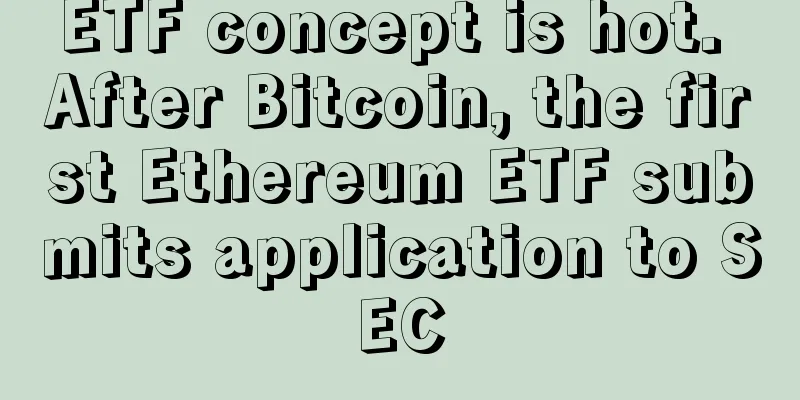Bitcoin is not a bubble

|
Bitcoin is not a bubble, or at least the available evidence strongly suggests it is not. Its growth is like a self-fulfilling prophecy: as more and more people believe in it as a medium of exchange and are willing to buy it, they create the conditions it needs to become more useful. Text | Daniel Krawisz. Original title: How We Know Bitcoin Is Not a Bubble. 2014/5/3. * * * The value of money No matter how many orders of magnitude Bitcoin grows, there will still be those who insist that it is a bubble that is doomed to fail. In response to this argument, I will describe a theory that describes how Bitcoin can be valued based on the Austrian Monetary Theory. In Austrian economics, money has value because it is liquid. This means that it is in demand everywhere and can be easily traded for goods. For example, suppose I have enough Bitcoin to buy a 100-ounce gold bar. At the end of 2010, this would be worth about 1 to 2 million Bitcoins and would be impossible to sell on the open market without significantly affecting the price. In contrast, at the beginning of 2014, 100 ounces of gold were worth about 100 Bitcoins, and this amount could easily be traded quickly on one of the major exchanges without noticeably affecting the price. Therefore, Bitcoin at the beginning of 2014 was more liquid than it was at the end of 2010, and therefore a better currency. Unfortunately, this insight into the value of money does not give us a way to value it, since liquidity cannot be separated from price. This is a problem — it sounds like a circular argument, since it says that the value of Bitcoin is caused by its price! This makes it impossible to detect whether Bitcoin is overvalued or undervalued. To prevent this model from being causal, a time element is needed. Our observations of the currency are from the past, while our judgments of its value are about the recent past. This makes the value of the currency a positive feedback loop. If the network is growing, then it will tend to continue to grow, and if it is shrinking, it will tend to continue to shrink. This monetary model has no independent quantity to estimate things like underlying value. Any price is as good as any other price - the only thing that matters is the direction it moves. This isn't really a valuation after all - but it's still the right way to understand Bitcoin's price. * * * Foam In the short term, if you spot the trend early enough, you can make money by buying anything that is trending upward in price. In other words, if one can predict that others are likely to value an item more highly in the future, whether that valuation is rational or irrational, then it makes sense to buy into that sentiment change. If a lot of people start thinking that way, then they can create a positive feedback loop among themselves and bid up prices beyond any rational valuation. This is a bubble. Bubbles burst because people eventually have to use a good for its ultimate purpose. Once it becomes known that the people who actually use the good are being bid out of the market, the price collapses because people no longer expect to value it higher and higher. However, money need not have any end use. It may simply be passed from person to person without being consumed. The valuation of a stock is the sum of its dividends adjusted for its interest. The valuation of a bond is its redemption value adjusted for the interest rate and default risk. The value of a commodity depends on the value of the goods it can be used to produce. However, for money there is no independent quantity that provides a reality check. All currencies are like a bubble that will never burst. [1] * * * Metcalfe's Law Some monetary theory can be understood in terms of Metcalfe's Law in computer networks. Metcalfe's Law says that the value of a network is proportional to the square of the number of nodes. The basic principle is that a network should be valued based on the number of connections it supports, which is approximately proportional to n^2 (for large numbers n). Therefore, as a network grows, it provides better and better opportunities for new members. As new members join, the network improves for all existing members. Metcalfe's Law must be slightly adjusted to apply to mediums of exchange, because some nodes in a transaction network will be more valuable than others. Those who own a large amount of the medium may spend more than those who own a small amount. Therefore, it is useful to use the market value of the medium of exchange as n rather than the number of people. Likewise, some transactions are more valuable than others, so it makes sense to use the volume of transactions rather than the number of transactions. A striking test of Metcalfe’s Law in Bitcoin has recently appeared on the Bitcointalk forum created by Peter R. I made my own chart here. This chart plots market cap in blue, and transaction volume squared excluding popular addresses in green. The left axis is price in USD. As predicted by Metcalfe's Law, transaction volume increases very neatly with the square root of the network size. Pretty neat correlation. I really wish I had made this first! However, I would like to criticize the interpretation of the chart. In the original Bitcointalk forum discussion thread, the green line was labeled "Metcalfe value," as if it were a valuation of Bitcoin, estimating its cost. This explanation is incompatible with the theory of monetary value I presented above. In my theory, value leads to transactions, and in the diagram, transactions lead to value. However, only potential transactions generate value. Past transactions have no value to anyone. The current size of the network and the attendant opportunities it may provide tomorrow are the motivation for people to buy and sell today. This may seem like splitting hairs, but the confusion of cause and effect can have serious consequences. For example, many people believe that in order to make Bitcoin more valuable, Bitcoins need to be spent and transaction volume increased. This is of course nonsense; all this does is fill the network with transactions to process something that no one really wants. This does not provide good value for a newcomer, because he needs a network that provides him with real opportunities, not just artificially increased transaction volume. The more the Bitcoin network focuses on artificially increasing transaction volume to make it look good, the more it looks like a Ponzi scheme. Instead, in order to make the network more valuable, we should become hoarders. This is more likely to show newcomers the many potential uses of Bitcoin as a medium of exchange. * * * Valuing Bitcoin A real good has value because it can be consumed or because something can be traded for it. Mises called these reasons for value "use value" and "exchange value." For example, gold can be used as money and as a component in electronics. Assessing whether a good is a bubble requires considering both of these factors; it is not enough to observe that the price of a is much greater than can be explained by its use value and conclude that it is a bubble. In other words, suppose gold is only used in electronics. If that were the case, its price should be much lower than it is now. However, some people start holding gold longer before producing anything with it. This would cause the price of gold to rise, thereby reducing its usefulness as an electronic component. However, it would also make gold more useful as a medium of exchange. If gold's increased exchange value is enough to attract more people to buy it despite its decreased use value, then the price of gold can continue to rise. Its price chart may look like a bubble, but there is no expectation of an imminent collapse. This brings us to Bitcoin. To what extent is Bitcoin’s price a rational assessment or an investment bubble? The answer is simple, much easier than for commodities such as gold. Bitcoin has virtually no use other than as a medium of exchange. Therefore, the fact that Bitcoin has any price at all proves that there are real network effects and that the reason for its price is its exchange value. With gold, one must consider the interplay between its use value and its exchange value, but with Bitcoin, there is no such confusion: Any demand for Bitcoin is sufficient to make it a medium of exchange. If demand continues to grow, then it becomes a better medium of exchange. There is no end to this process, because Bitcoin’s primary value is the network effects surrounding it, not any ultimate productive use. Each step in Bitcoin’s growth follows a pattern of investing in the coin, increasing Bitcoin’s liquidity, creating more opportunities for its use as a medium of exchange, and then investing in Bitcoin’s infrastructure to enable those opportunities. [2] Therefore, Bitcoin is not a bubble, or at least the available evidence strongly suggests that it is not. Its growth is like a self-fulfilling prophecy: as more and more people believe in it as a medium of exchange and are willing to buy it, they create the conditions it needs to become more useful. * * * in conclusion Every time you buy Bitcoin, a fairy grows wings. Now clap your hands, tap your heels three times, and believe in Bitcoin! It only takes a mustard seed-sized amount of faith. [Updated May 15, 2014: Clarified “valuing Bitcoin” section in response to criticism.] * * * Notes 1. One of the best arguments against the Bitcoin bubble theory is presented by Peter Šurda in “Bitcoin Economics” where he asks the question “What will replace Bitcoin?” The key to the question is that because Bitcoin reduces transaction costs compared to its alternatives, people have at least some reason to continue holding it until a better alternative comes along. 2. This analysis leaves something to be explained - if the value of a medium of exchange is just market cap, why does Bitcoin go through hype cycles? Every time Bitcoin's price rises, its underlying value increases, so why does its price plummet? I don't know the answer, but I think I have a reasonable hypothesis: it takes time for the network to adjust to the large number of new people in each hype cycle. Each member of the network adds value, but this takes time - network members have to learn something about each other before they can more fully realize the value they add to the network. If this effect is real, then the price may temporarily rise faster than the network can support growth. |
<<: Germany's Hetzner anti-crypto policy sounds alarm bells for Ethereum's future
>>: Ethereum merges, Nvidia's revenue plummets, and the era of graphics card mining officially ends
Recommend
The triangle pattern on the palm represents
There are many kinds of palm lines on our palms. ...
Bitcoin leads gains, XRP leads losses
Author | Hashipi Analysis Team...
Mysterious organization releases video of Kim Jong-nam's son, says it only accepts Bitcoin donations
Kim Han-sol, whose father Kim Jong-nam is the hal...
What is the sign of a red mole on the body?
Moles are very common on each of us, but for most...
Why shouldn't you marry a woman with a hooked nose?
People use physiognomy to infer a person's fo...
How does squinting eyes look like?
Through a person's face, especially the eyes,...
Moles that will bring you bad luck in love
1. Mole on the forehead Speaking of moles on the ...
The Meta Account Layer is the portal into the Web3 Metaverse
The current Web3.0 is more like a limited set, wi...
How to tell whether brothers and sisters are good or bad through their faces
How to tell whether brothers and sisters are good...
How to tell fortune from a woman's palm
Money is the source of life, and everyone is conc...
How to read the broken palm lines
A broken palm refers to a palm line where the wis...
How will Bitcoin's latest halving affect the market?
I believe everyone has seen a lot of discussion a...
Visa and Bank of China to jointly tailor digital RMB products for the 2022 Beijing Winter Olympics
Visa, global partner of the Olympic and Paralympi...
It is reported that Bitmain's Ethereum mining machines will be shipped in May, and Wu Jihan wants to lead the mining group to control ETH
Synchronous Finance reported on March 29 Jihan Wu...
A woman with a bad temper will never have a peaceful life if you marry her.
The purpose of marriage is to live a better life ...









